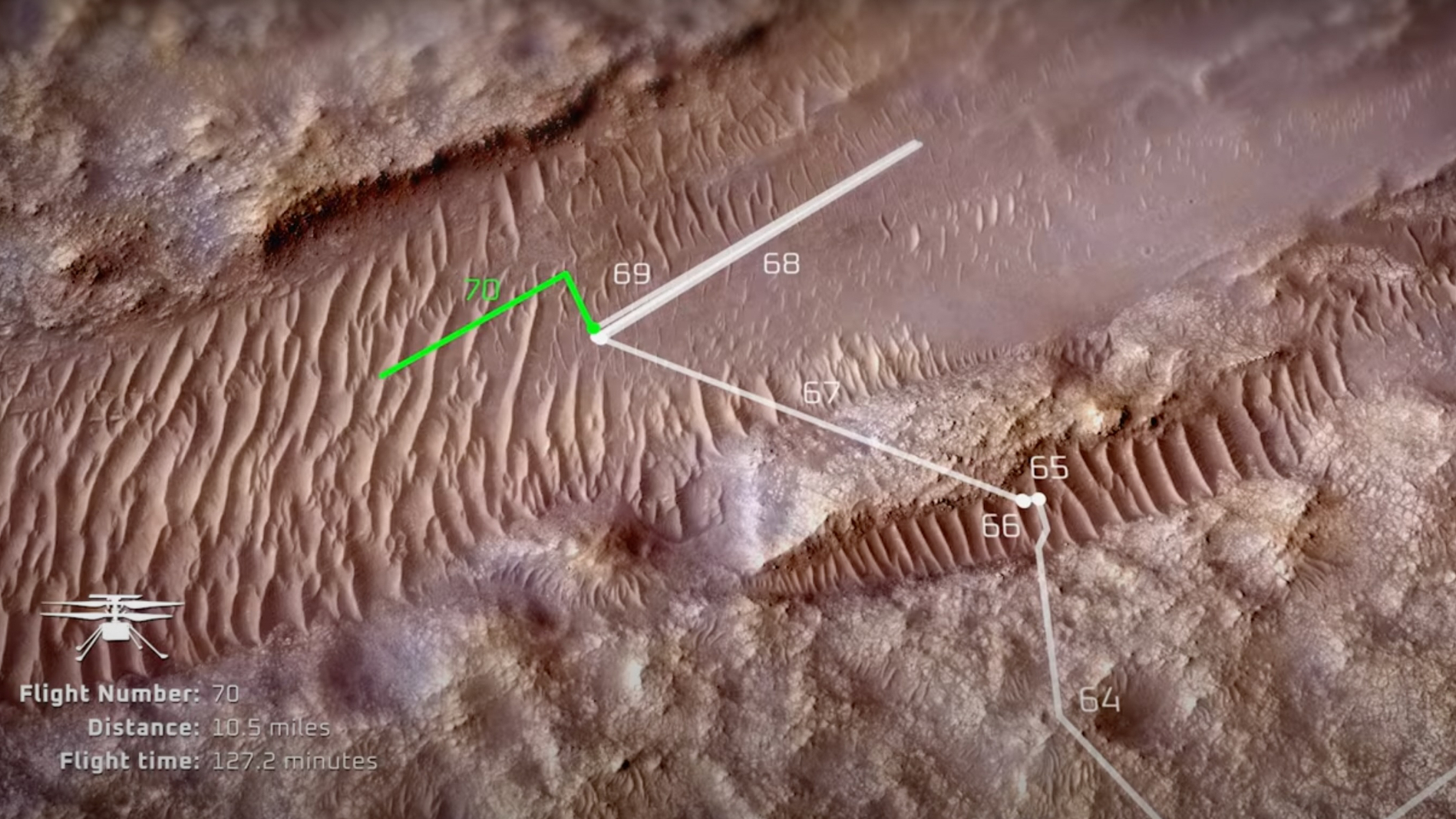
NASA's history-making Ingenuity helicopter covered a lot of ground on Mars over the past three years, as a new video shows.
The video, which was released on Thursday (April 18) by NASA's Jet Propulsion Laboratory (JPL), shows where Ingenuity went on each of its 72 Red Planet sorties, linking each flight line together in an otherworldly Etch a Sketch creation.
This work of art throws Ingenuity's epic achievements into stark relief, showing the tough terrain the 4-pound (1.8 kilograms) chopper negotiated and the impressive distance it traveled — 10.5 miles (17.0 kilometers) in total, about 14 times farther than it was originally expected to fly.
Related: Ingenuity team says goodbye to pioneering Mars helicopter
Ingenuity touched down with NASA's Perseverance rover inside Mars' Jezero Crater in February 2021. The rotorcraft was designed to be a technology demonstrator; its main task was to show that aerial exploration is possible on Mars despite the planet's thin atmosphere, which is just 1% as dense as that of Earth at sea level.
Ingenuity aced that prime mission over the course of five flights in the spring of 2021, then embarked upon an extended mission during which it served as a scout for the life-hunting, sample-caching Perseverance.
That extended mission lasted far longer than Ingenuity's handlers could have imagined — 67 sorties over nearly three years. The helicopter's flying days finally came to an end on Jan. 18, when its rotors were damaged during a rough landing.
Ingenuity may now be stationary, but it's not dead: The rotorcraft is now operating as a weather station and technology testbed, gathering data that could aid future Mars explorers.
Getting ahold of that data will soon require a physical meetup on the Red Planet, however: Ingenuity relays all of its communications via Perseverance, and the car-sized rover will soon disappear over the Martian horizon, leaving its little partner all alone.
Ingenuity's success could pave the way for more extensive aerial exploration of Mars down the road. Mission team members are already working on designs for larger, more capable rotorcraft that could collect a variety of science data on the Red Planet, for example.
And Mars isn't the only drone target: In 2028, NASA plans to launch Dragonfly, a $3.3 billion mission to Saturn's huge moon Titan, which hosts lakes, seas and rivers of liquid hydrocarbons on its frigid surface. The 1,000-pound (450 kg) Dragonfly will hop from spot to spot on Titan, characterizing the moon's various environments and assessing its habitability.







